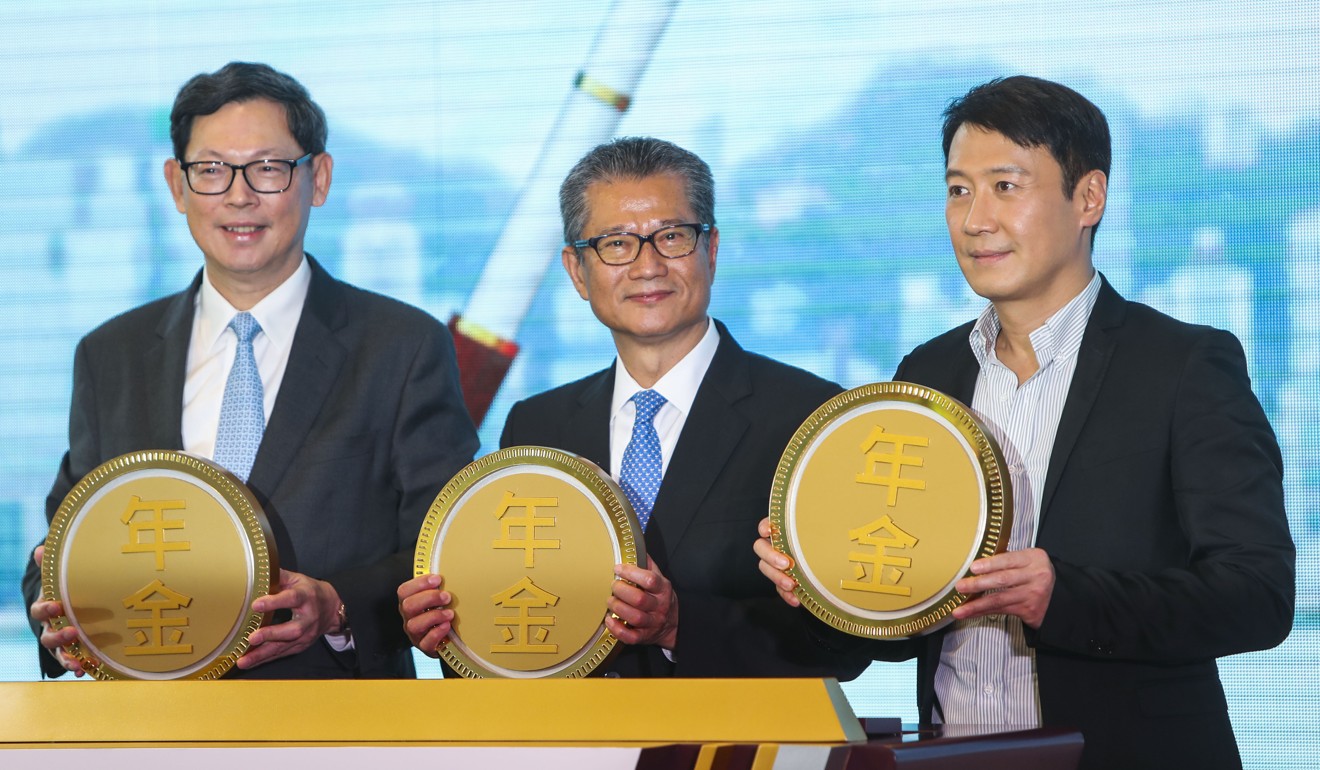
Hong Kong government will double size of planned public annuity scheme if demand surges, finance chief says
The cap on investment into the scheme will be lifted to HK$20 billion in the first year if initial interest translates into actual take-up
Hong Kong’s government would double the size of a public annuity scheme for pensioners if the strong initial interest in the offer translated into oversubscription, the city’s financial chief said on Thursday.
Under the scheme, first announced last year, residents aged 65 or above can register between July 19 and August 8 to invest up to HK$1 million (US$127,426) each in exchange for monthly payments. The government originally set the maximum amount of investment it would accept in the first year of the scheme at HK$10 billion, but will double it to HK$20 billion if there is sufficient demand.
“After the government announced the public annuity plan last year, the public has responded positively. If there is oversubscription of the plan by the public, the [operator] is prepared to double the first tranche quota from the current HK$10 billion to HK$20 billion to meet the demand,” Financial Secretary Paul Chan said after hosting a launching ceremony for the scheme.
The plan is the government’s latest initiative to cope with Hong Kong’s rapidly ageing population. The city, which lacks a comprehensive social security system, has 1.3 million people aged 65 or over, about 18 per cent of its total population, but the number is expected to increase to 31 per cent of the population by 2036.
Under the scheme, residents will pass their investment to a government agency, HKMC Annuity (HKMCA), a wholly owned unit of the Hong Kong Mortgage Corp that will oversee the scheme. HKMCA will pass the money on to the Hong Kong Monetary Authority, the city’s de facto central bank, which will invest it and pay the investor every month.
Residents investing the maximum HK$1 million lump sum would earn HK$5,300 every month for women and HK$5,800 a month for men, the lower figure for women taking into account a longer life expectancy. The minimum investment of HK$50,000 would earn HK$265 a month for women and HK$290 for men. The monthly payments are for life and the government would shoulder any investment loss.
Two older people the Post spoke to said they backed the scheme.
Wong Lap-wai, a driver who will turn 65 in two years, said he would buy into the scheme.
“It is a government-run scheme so there is no need to worry about a company going bankrupt. There would be monthly guaranteed payment for life which assures of a stable income every month after retirement,” he said.
Meanwhile Cheung Tin-sang, who is still working as a broker, said that as he was now 80, the scheme was too late for him, but he would recommend it for others.
“For those who are 65 or 70, I would encourage them to buy into the scheme as they could have a stable monthly income of about HK$5,000, which is pretty good for a retiree,” Cheung said.

If investments into the scheme were to exceed the higher threshold, the HKMCA would adopt an allotment system, reducing investors’ contributions. But they would be free to invest any part of their money remaining in the following year. The investment caps for the second and subsequent years are yet to be decided.
“Ageing is a perennial issue for Hong Kong society, as every year there are over 100,000 people who will become 65. Hence, the annuity plan is designed on the basis of a regular subscription, “ said Edmond Lau, chief executive of HKMCA. Lau said applicants can expect an average annual rate of return at 4 per cent.
Chan Kin-por, a lawmaker who represents the insurance sector, said it would be good to see the cap raised to HK$20 billion, as he believed there would be strong demand for the scheme initially. But he warned that it may become less attractive if interest rates in Hong Kong were to continue to rise.
“Stock investors would not like to buy annuity products if the returns from the products are lower than those from stock investments. The public annuity would mainly attract those pensioners who are very conservative and would only put their money in the bank,” he said.
“At present, some large sum bank deposits could pay 2 per cent interest … if interest rates continue to rise, pensioners may prefer putting their money into bank time deposits rather than buying into the annuity scheme,” Chan said.
Officials at the HKMCA said they were confident a new cap at HK$20 billion would be high enough to fill potential demand. The sum is almost three times the size of the current Hong Kong privately run annuity market, which in 2017 saw HK$7.7 billion in new business.
On Monday the HKMCA will publish its list of 20 retail banks through which applicants can submit their subscriptions.
After these are accepted, expected around mid-September, applicants must take part in a financial vetting process by the bank to confirm they can afford the investment. This final stage of the application procedure is slated to begin from the end of September and last until March 2019.
A recent survey by fund company Schroders of 700 people in Hong Kong found that about 30 per cent were interested in buying into the public annuity scheme.


